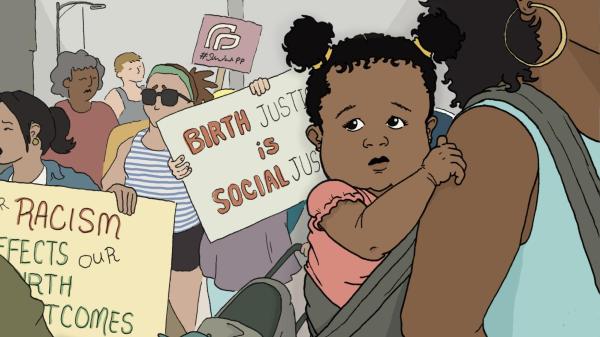Not all birthing experiences are created equal. This truth is painfully evident in the United States of America as this nation holds the worst maternal mortality rates for similarly wealthy nations. Furthermore, this trend is only getting worse with a steady rise in pregnancy-related deaths spiking for the past two decades. Rising birth complications and mortality related to birthing are disproportionately experienced by different racial groups, making this not only a public health issue, but a shameful reminder of continued racial injustices in the United States.
The Stats
The COVID-19 pandemic has only further exacerbated medical inequality, and this is especially true in terms of pregnancy-related care. Firstly, Black communities experience complications and/or mortality at 2.6x the rate of White communities. Other minoritized communities such as American Indian and Alaska Native also experience higher rates of complications and mortality than their White counterparts. These stories are especially tragic when considering that nearly 92% of mortalities could have been saved through additional medical attention and care.
These medical inequities not only affect the person giving birth, but the child as well. Children of Black, Indigenous, and Pacific Islander communities are more likely to experience low birth weights, preterm births, and a significant lack of prenatal care, which open the child to additional medical complications.
The Movement
Rather than address this health crisis, current legislation is seemingly only limiting access to reproductive care. Thus, like countless other movements pursuing equity, community organizing has taken the lead in addressing this plight. And so enters Birth Justice, a movement started and headlined by Black women with the purpose of limiting unnecessary suffering and supporting marginalized communities in pregnancy and birth related efforts. This begins by recognizing and honoring the lives of those who have been impacted by a society and healthcare system that failed them. One way in which these experiences have been documented is through Birth Stories, a platform dedicated to hearing the voices of those often unheard.
Other aspects of Birthing Justice include the right to decide when, where, and how to have a pregnancy. This includes the reintroduction of traditional birthing practices such as the presence of midwives and doulas both inside and outside the hospital setting. Birthing Justice also considers breastfeeding rights and education during the postpartum period, and seeks to empower and support pregnancies in all situations, including those incarcerated during their pregnancy.
These aspects of the Birthing Justice movement provide the framework to reduce inequality, suffering, and needless death.
Health Equity
It is important to remember that health and healthcare inequity is syndemic, that is, caused by myriad sources. Economics, societal norms, education, nutrition, and countless other aspects of life contribute to one’s health experience. While the burgeoning Birth Justice movement provides the space and resources to improve birthing outcomes, other aspects of society and legislation are in desperate need of improvements to truly pursue equity.
Our Event
Designed in collaboration with one of our long-term supporters, our upcoming event Birthing Justice explores how birthing knowledge has become hospital-centric, the intersectional ramifications of this shift, and ways to move towards a more just, effective, and safe birth culture. Our event is a free community conversation, elevating the knowledge of resources and practices available to further support and acknowledge those affected by birth disparities.
Birthing Justice will be held at the SEMA Foundation Headquarters in Chandler, Arizona, on Wednesday, April 19th, 2023 from 6-7:30PM (AZ/MST).
Resources
- https://voicesforbirthjustice.org/
- https://pretermbirthca.ucsf.edu/
- https://www.blackwomenbirthingjustice.com/birth-justice
- http://fourteeneastmag.com/index.php/2017/04/28/birth-justice-is-social-justice/
Blog Sources
- https://www.birthingjustice.com/about/
- https://www.birthingjustice.com/birth-stories/
- https://www.commonwealthfund.org/publications/issue-brief-report/2020/dec/maternal-mortality-united-states-primer
- https://www.kff.org/racial-equity-and-health-policy/issue-brief/racial-disparities-in-maternal-and-infant-health-current-status-and-efforts-to-address-them/
- https://www.cdc.gov/nchs/data/hestat/maternal-mortality/2021/maternal-mortality-rates-2021.htm#:~:text=In%202021%2C%20the%20maternal%20mortality,for%20White%20and%20Hispanic%20women

